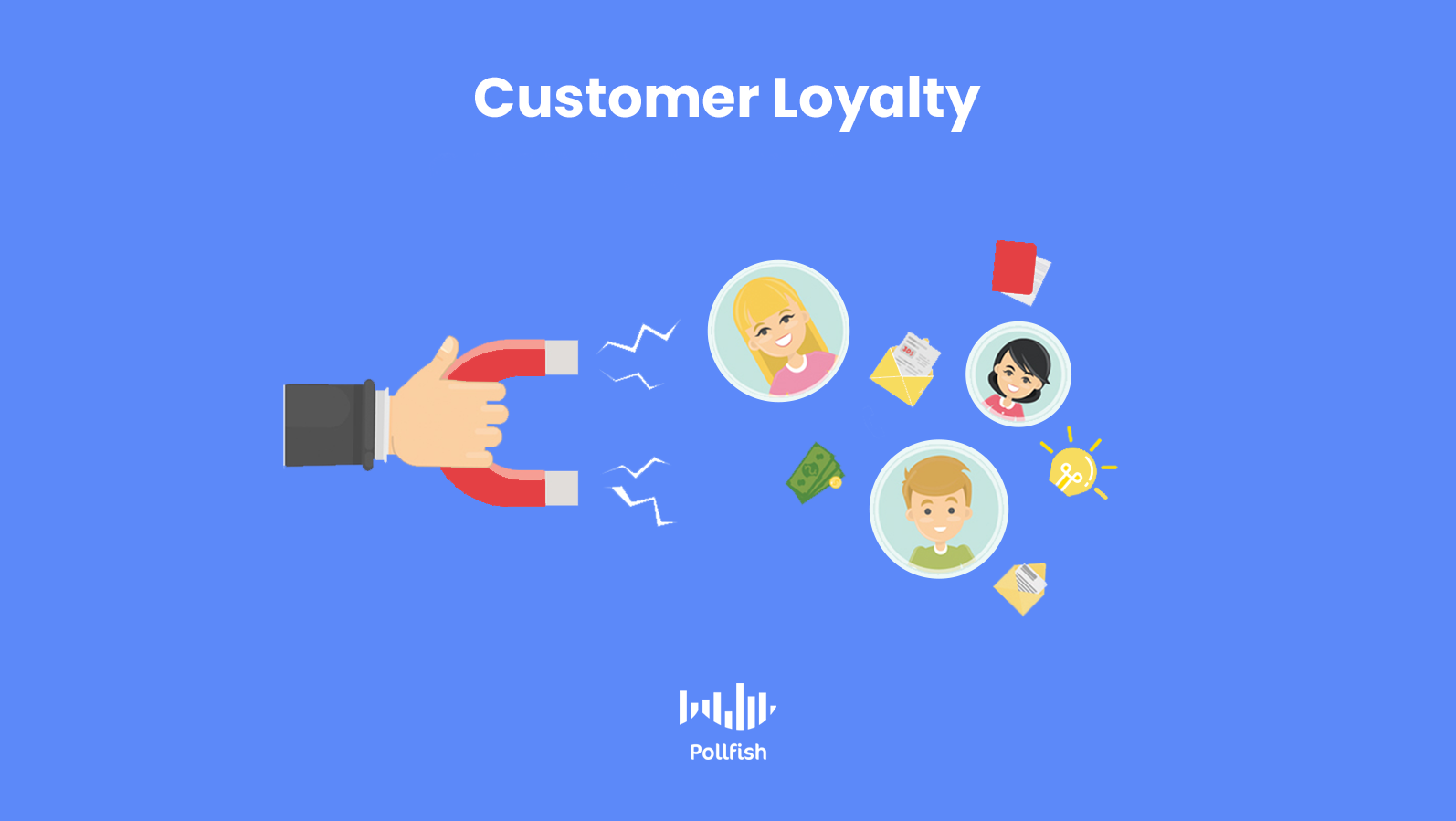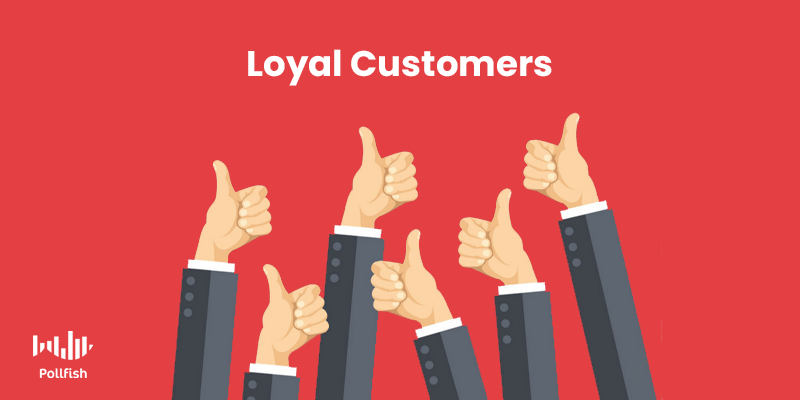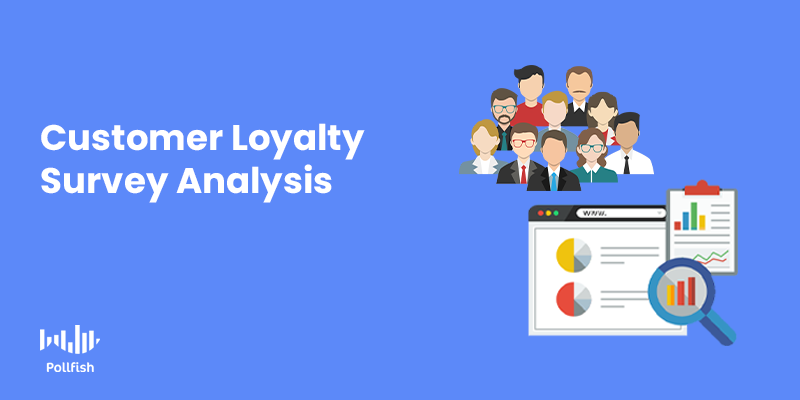Diving Into the Customer Loyalty Survey for Business Growth

There is nothing quite as sought after in the business world as customer loyalty. A customer loyalty survey can help businesses achieve this lofty end.
There is more to customer loyalty than just returning customers, as this concept goes beyond customer retention. Thus, customer loyalty also has its own methods of measurement and attainment.
This article presents a deep dive into the customer loyalty survey, not simply shedding light on its particulars, but how it can help you grow your business by creating customer loyalty within your target market.
Defining Customer Loyalty
Before jumping into the customer loyalty survey, let us cover its underlying theme of customer loyalty. This term is used to describe an ongoing business relationship in which customers consistently choose a company’s product/ service over that of its competitors.
This concept is the driving force behind repeat purchases from customers, even in a competitive market, i.e., one in which competitors offer similar price points, promotions and experiences.
Customer loyalty is not merely customer retention; rather it is the most powerful form of it, as it signifies the segment in your target market that exhibits loyalty to your brand. That means that this group of customers provides more than just a few occasional buys from your business.
Rather, these consumers have a more personal connection to your brand, a tie that keeps them returning to your business on a regular basis. This is established by way of building a promising reputation or having impacted your customers in a considerable fashion.
This is to say that loyalty takes several factors to build — it cannot be achieved by one good customer experience. That is because the nature of loyalty is ongoing, so while you may have provided one positive experience, it is not guaranteed to retain your customers, let alone build a sense of trust, which breeds loyalty.
Why are Consumers Loyal to a Brand?

From the above section, we can deduce that loyalty comes from a brand’s environment. This environment has to provide multiple points of customer satisfaction.
This multi-faceted approach can help build customer loyalty over time. Here are a few concrete reasons as to why consumers are loyal to a brand:
- They associate it with positive experiences, such as online experiences, interactions on digital, phone or brick and mortar channels with brand representatives.
- They feel that they are getting something of quality from your brand in particular.
- The price ranges, discounts and promotions fit within their budgets and lifestyles.
- Customers feel connected to a brand due to its values and associations.
- Customers are intrigued by the content a brand provides as an auxiliary, whether it is on social media, websites or video content.
Why Your Business Needs Customer Loyalty
Your business needs to establish at least some degree of customer loyalty within your existing customers. Loyal customers can help your brand stay afloat even in times of crisis.
In fact, a negative experience can be a covert blessing — if you correct an issue a customer has, it reinforces the positive nature of your brand and customer experience (CX). Thus, it will strengthen your brand’s relationship with customers, paving the way to loyalty.
Here are the key reasons as to why your business needs customer loyalty:
- It represents a steady pool of income as opposed to one-off purchases.
- It prevents existing customers from leaving your brand, either by way of website bounces, not completing a site purchase, doing window shopping or turning to competitors.
- Customer acquisition is more expensive than customer retention.
- A 5% increase in retention may lead to a profit increase of up to 95%.
- It is easier to cross-sell and up-sell to existing customers than new ones. (A brand is 60-70% likely to sell to existing customers and only 20% to new customers).
- Loyal customers are more likely to recommend your brand, taking on a crucial marketing effort themselves.
- Loyal customers tend to spend more on a brand than first-time customers.
There are several other benefits that conjure up the need to attain customer loyalty. The above lists only a handful of chief reasons.
How to Measure Customer Loyalty
The most effective way to measure customer loyalty is via the customer loyalty survey, a type of survey specifically designed to gauge the degree of loyalty (or lack thereof) customers harbor for your business.
The true value of a customer loyalty survey is that it can take up a variety of formats, all while allowing you to ask all the questions you need.

The following list enumerates how to measure customer loyalty. Although some of the following items exist as measurements, they can also be used as surveys themselves.
- Customer Lifetime Value (CVL): The measurement of how much value a customer will add to your company during their lifetime. The longer a customer makes purchases from a business, the greater their CVL becomes.
- To calculate: Multiply customer value by the average customer lifespan to get the approximate value you can expect from an average customer during the course of their business relationship with you.
- Repeat Purchase Rate: The percentage of your entire customer base that partakes in repeat business with a company. Also called the repeat customer rate, reorder rate, or customer retention rate, it falls between 0% to 100%.
- To calculate: Divide the purchases from repeat customers by all the buys on a site during a given date range.
- Net Promoter Score (NPS): This is a type of customer loyalty survey, also useful for measuring customer satisfaction. This score-based survey shows how likely customers are to recommend your brand or offerings. It asks respondents to rate their likelihood of recommending you on a scale of 1-10. (1-6 range = detractors, 7-8 range = passives & 9-10 range = promoters).
- To calculate: Subtract the total number of detractors from the total number of promoters to determine how many people are likely to recommend you. ‘
- Customer Loyalty Index (CLI): A standardized customer loyalty survey used to monitor customer loyalty over time. It relies on multiple factors like the NPS, upsells, and repeat purchases.
- It achieves this via three core questions: How likely are you to recommend us to your friends and family? How likely are you to buy from us again in the future? How likely are you to try our other products?
- To calculate: Find the average of the 3 responses, with each response range being that of 1-6; 1 is a strong yes while 6 is a strong no.
How to Create a Customer Loyalty Survey
You can create a customer loyalty survey in a number of manners and styles. If you want to use the NPS score, create an NPS survey. If you prefer the Customer Loyalty Index, then use its model in your survey.
But if you are considering creating a general customer loyalty survey, consider the following:
- Firstly, you should target your customers only.
- Filter the survey so that only existing customers qualify as respondents by way of your demographics and screening questions.
- You can hasten the amount of time it takes to reach a certain amount of respondents by sending customers a survey after they made a transaction, that way you’ll know that they are indeed customers.
- Then, in the questionnaire section of the survey, add questions that focus on customer loyalty and its subtopics.
The following gives several examples of the types of questions to incorporate in your customer loyalty survey.
General Customer Loyalty Questions
- Do you trust [name of brand] when it comes to [industry needs, specifics]?
- Do you consider [brand] to be high-quality?
- Which experience has left the best impression on you?
- Have you bought from us before, if so how many times? (Add an option for regularly)
- How likely would you be to recommend our company to your friends or colleagues?
Customer Loyalty Based on Company Performance Questions
- How would you rate your experiences with our [sales rep, customer support rep, etc.]?
- Was our [customer support, tech staff] able to help you resolve your problems today?
- How quickly do we answer your concerns?
- How would you rate your satisfaction with our products or services on the following scale?
- Are you satisfied with the support you received today?
Customer Loyalty Based on Competitor Landscape Questions
- How likely would you buy from a competitor if their products(s) were cheaper?
- How likely would you switch brands if [competitor] had cheaper products/services?
- How would you compare us with this brand? (Leave an open-ended response field)
- How would you rate our products/services on a scale of 1-10 in comparison to [competitor]?
- What do you believe we offer better than our competitors?
How to Analyze a Customer Loyalty Survey
After you’ve completed your survey research, it’s time to enter the analysis phase. If you want to analyze survey data like a pro, there are several things you should scrutinize.
Firstly, compile the survey data into different forms so that can easily detect patterns and trends. For example, you may want to consider using cross-tabs, charts, tables, graphs and spreadsheets.
The way you choose to lay out your data will depend on your own needs and preferences.
To delve into the subject of loyalty, start by looking at customer satisfaction questions and surveys. These will help you determine if customers are generally satisfied with your brand or certain aspects of it.
Then, pay attention to questions that relate to your company performance, as these will spell out the need for changes or whether your brand is in good standing. These can also relay opinions on trust.
Following this, look at the general customer loyalty questions; these can give you a broader understanding of how your customers feel about your brand. A high level of positive answers points to customers set on the path towards loyalty.
Finally, assess how your customers rate you in comparison to your competitors. Based on your findings, ask yourself, do your competitors pose a real threat? Will they hamper your customer loyalty? If so, consider the ways in which you can improve your products, services and experiences to gain an edge over them.
The latter of this is going to be a more ambitious pursuit as it will involve innovating and potentially rebranding. But surveys can help on those fronts as well.
Investing in Customer Loyalty Surveys
Customers who intend on shopping from you are the lifeblood of your business. This is because, as aforementioned, they will be the last to stop patronizing you, should a PR issue arise.
As such, investing in customer loyalty sets you on the road to growing your profits and thereby, scaling your business. Loyal customers are not just repeat customers; they are living, breathing marketing conduits for your brand, as they are likely to recommend your brand and write positive online reviews.
In order to invest in customer loyalty, you must invest in the customer loyalty survey. This will help you gather the exact thoughts and opinions of your customers in relation to your brand. It will also allow you to grasp how you stack up against your competitors.
Frequently asked questions
What is customer loyalty?
Customer loyalty indicates an ongoing relationship in which a customer consistently chooses a company’s product or services, rather than purchasing from a competitor.
What are some of the reasons why customers are loyal to a brand?
Customers may become loyal to a brand when they feel that the brand is of higher quality, has a better price point, resonates well with their lifestyle, offers a positive customer experience, or because they are in line with the brand’s values.
What are some of the tools used to measure customer loyalty?
There are many tools that are used to measure customer loyalty, including the Customer Lifetime Value (CVL), Repeat Purchase Rate, Net Promoter Score (NPS), and the Customer Loyalty Index (CLI).
What is the Customer Loyalty Index (CLI)?
The Customer Loyalty Index (CLI) is a type of customer loyalty survey that is used to measure and understand how customer loyalty changes over time. The survey contains just three questions with 1 - 6 as scaled responses. The final score is the average of these 3 responses.
What is a customer loyalty survey?
A customer loyalty survey is a research methodology that seeks to measure how loyal a group of customers are to a particular company or brand. A customer loyalty survey is distributed only to existing customers.
Do you want to distribute your survey? Pollfish offers you access to millions of targeted consumers to get survey responses from $0.95 per complete. Launch your survey today.
